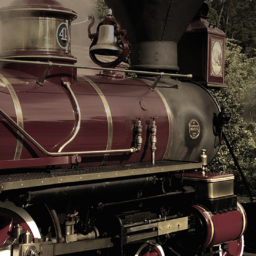The world population has reached 7.3 billion and is projected to reach 9.8 billion by 2050 with the vast majority of this growth expected in the cities of developing countries. In fact, the world is already undergoing the largest wave of urban growth in history, with 54 percent of people living in urban areas—a number that is expected to increase to 6 billion by 2045.
Among the challenges urbanization is expected to bring is access to fresh food. A lack of fresh food will mean that reliable packaging, storage and distribution systems will be more significant than ever. Likewise, food safety, nutritional value and environmental impact will become even more essential than they are today.
As this challenge of urbanization begins to transpire, one sustainable solution stands out: the steel can.
The History of the Steel Can
At the turn of the nineteenth century, Napoleon Bonaparte helped to prompt food packaging innovations when he offered a reward for anyone who could find a way to preserve food for his troops. In 1810, an Englishman responded by patenting a design for an iron can with tin plating and lead soldering. Commercial production began soon after in 1812 at a canning factory near London.

About a hundred years later in 1922, the process of can crimping was introduced to tin can manufacturing. By the mid-1950s, tin cans no longer used lead solder but instead consisted of two or three pieces of tin-plated steel crimped together to form an air-tight seal, resulting in an attractive, safe and functional product.
Although tinplate currently only accounts for around 1 percent of steel production, it is still a highly visible and dynamic industry, allowing for high quality, shelf-stable food to be available to people in all corners of the globe.
Feeding the World
Now, as the world’s population continues to increase, steel cans continue to offer significant advantages over alternative food packaging systems.
Modern-day food processing has utilized state-of-the art manufacturing techniques to package and preserve food for an extended time. Thanks to the superior performance attributes of cans with epoxy resin coatings, consumers can have the utmost confidence in the canned foods and beverages they enjoy.

And considering that more than 1,500 different varieties of food, including a range of seasonal fruits and vegetables, are packed in steel cans, consumers are offered a supply of diverse foods at any time of the year.
Additionally, as fresh food becomes less available, steel cans help to extend the shelf life of food. The containers are tamper-resistant and protect food and drink from moisture, oxygen and light, helping to preserve the nutritional value of their contents without the need for added chemical preservatives. Studies show that canned tomatoes, for example, contain as much or more vitamin C than fresh tomatoes.
Energy-Saving, Eco-Friendly
While steel cans are incredibly useful for people, they’re also environmentally-friendly—an essential factor in a world threatened by climate change.
Compared to other food preservation methods, steel cans save energy because refrigeration and freezing are not necessary.
Furthermore, steel cans can be recycled again and again without losing their key properties such as strength, ductility or formability. Steel’s magnetic attributes also make it the easiest packaging material to extract from the waste stream for reuse.
As a result, the steel can remains the world’s most recycled packaging material, with the global recycling rate for steel cans being 68 percent in 2007. According to worldsteel LCA data, this saved 11 million tonnes of CO2 (carbon dioxide), which would have otherwise come from new steel production. This saving is equivalent to taking approximately 280,000 cars off the road.
Nowadays, steelmakers like POSCO are producing ever-thinner materials, allowing more cans to be produced per tonne of tinplate. This will help to contribute to resource efficiency and reduce the amount of CO2 being emitted over the can’s life cycle.

Today’s steel can is a versatile, efficient and sustainable packaging solution that will become increasingly more important in the near future. Along with all the advantages cans offer consumers, their eco-friendly factors will be a big benefit as the urbanizing world increasingly turns to steel cans for food packaging.






